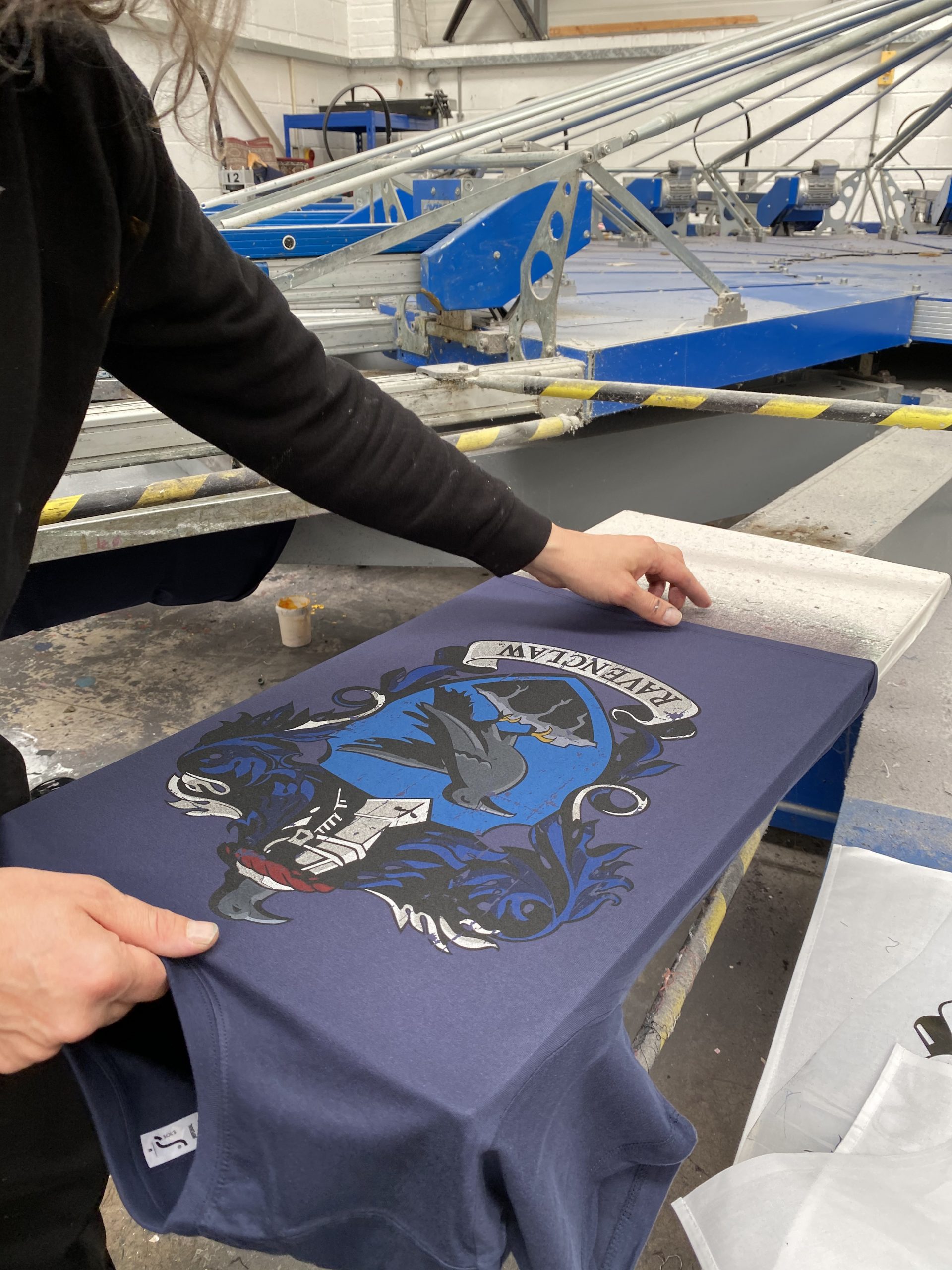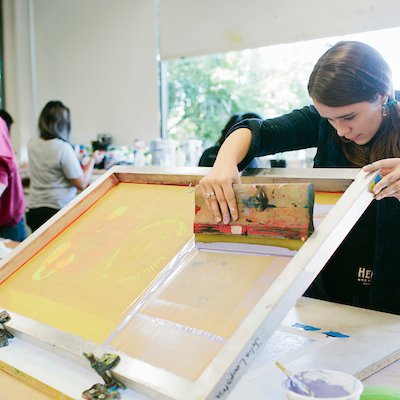ChatGPT said: 10:9 Design Embroidery success stories: how clients upgraded their brand identity
The Necessary Overview to Recognizing Screen Printing and Its Versatile Uses
Screen printing has an abundant background that goes back to old times, developing right into an advanced method utilized throughout different sectors today. This guide checks out the complexities of the screen printing procedure, outlining its applications in home, advertising, and style decoration - 10:9 Design Company. Understanding these fundamentals can open up innovative capacity for both imaginative and business projects. The complying with sections will certainly reveal necessary pointers and strategies to enhance one's screen printing endeavors
The History of Screen Printing
Screen printing has roots that trace back centuries, its evolution reflects the creative and technological improvements of numerous cultures. Originating in old China, the technique was at first utilized for decorating fabrics and later infect Japan, where it became integral to Ukiyo-e woodblock printing. The approach changed to Europe in the 18th century, where it gained popularity among artisans and business printers. The creation of picture solution in the 20th century reinvented screen printing, permitting for even more detailed layouts and better efficiency. Musicians like Andy Warhol better drove its appeal, using the medium to develop renowned works that blended commercialism and art. By the late 20th century, screen printing had developed itself as a versatile strategy, utilized in style, advertising and marketing, and art. Today, it proceeds to evolve, integrating digital technology and expanding its applications across various sectors.
The Screen Printing Process Explained
Screen printing changes creative visions right into tangible styles via a collection of precise steps. Initially, a photo is created and after that transferred onto a screen, normally made of fine mesh textile stretched over a framework. A light-sensitive emulsion is put on the screen, which is subjected to light, hardening in areas not covered by the image. After rinsing the unhardened solution, a stencil is created.
Next off, the screen is placed over the substrate, whether it be fabric, paper, or another material. Ink is then pushed via the open locations of the pattern using a squeegee, depositing the style onto the substratum listed below. This process can be duplicated for numerous colors, requiring different displays for each and every shade. Finally, the published thing is treated using warmth to ensure the ink adheres correctly, leading to a resilient, dynamic style on-line.
Kinds Of Screen Printing Techniques

In addition, specialty strategies, such as discharge screen printing, get rid of color from the material to create softer prints, while foil screen printing uses metallic aluminum foil to attain a glossy surface (10:9 Design Embroidery). Each technique offers distinct characteristics, satisfying different imaginative demands and manufacturing ranges, eventually expanding the possibilities within the screen printing domain
Applications of Screen Printing in Numerous Industries

Furthermore, the signage and advertising and marketing industries utilize screen printing for developing captivating displays and banners. This technique permits strong colors and intricate designs that capture focus. In electronic devices, screen printing is employed for using conductive inks to circuit card, essential for element links. Additionally, the home decoration sector welcomes screen printing to create distinct styles on fabrics and wall art. In general, screen printing acts as a vital device across varied areas, boosting products with customized and visually enticing graphics.
Tips for Successful Screen Printing Projects
While undertaking a screen printing job, mindful focus to detail can substantially boost the final outcome. First, picking top quality materials is vital; this includes the screen, inks, and substrates. Utilizing suitable mesh counts can influence ink deposition and information resolution. Preparation is equally vital; detailed cleansing of screens and proper exposure times guarantee crisp prints.
Next, accurate registration is vital for multi-color prints. Using alignment tools can assist attain exact layering. Furthermore, testing prints on scrap materials prior to manufacturing helps identify potential issues without throwing away sources.

Often Asked Questions
What Products Are Ideal for Screen Printing on Material?
Cotton and polyester blends are optimal for screen printing on fabric because of their longevity and ink absorption. Additionally, specialized textiles like silk or canvas can generate special structures and finishes, enhancing the total layout high quality.
How Do I Tidy and Maintain Screen Printing Devices?
To preserve and clean up screen printing equipment, one must routinely clean displays with ideal solvents, evaluate mops for wear, lubricate moving parts, and shop all items in a dry, dust-free environment to lengthen their lifespan.
What Are the Environmental Influences of Screen Printing?
Screen printing can have significant environmental influences, consisting of chemical waste from inks and solvents, water usage throughout cleansing procedures, and energy consumption. Sustainable methods and environmentally friendly products are necessary for minimizing these negative results.
Can Screen Printing Be Done at Home Properly?
Screen printing can be effectively done at home with the best products and strategies. Enthusiasts can produce top quality prints, though success depends upon their ability degree, devices, and understanding of the procedure included.
What Are the Expenses Related To Starting a Screen Printing Organization?

Starting a screen printing service entails prices for tools, materials, and work area. Preliminary costs typically range from a couple of hundred to a number of thousand bucks, relying on the scale, high quality of equipment, and preferred manufacturing ability.
Screen printing has a rich history that dates back to old times, advancing right into a sophisticated method used throughout various markets today. An additional method, rotary screen printing, employs round displays, assisting in continual printing on material rolls, therefore boosting performance for large-scale manufacturings. In addition, specialty methods, such as discharge screen printing, eliminate dye from the fabric to produce softer prints, while aluminum foil screen printing uses here metal foil to accomplish a glossy surface. In the fashion sector, screen printing is commonly utilized to produce lively layouts on clothing, allowing brand names to showcase their special styles. Cotton and polyester blends are perfect for screen printing on fabric due to their longevity and ink absorption.